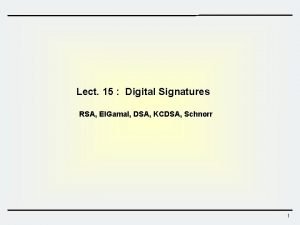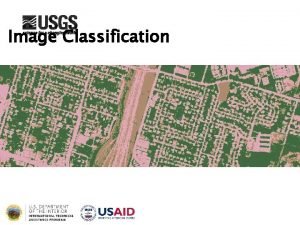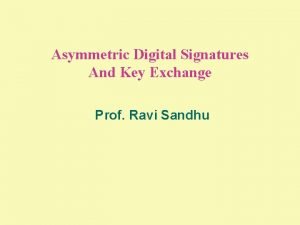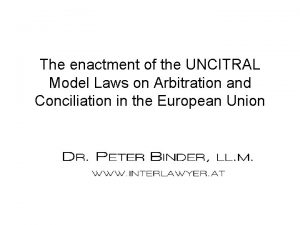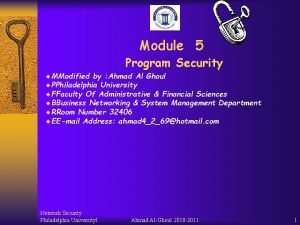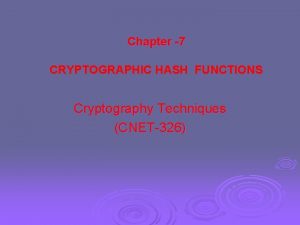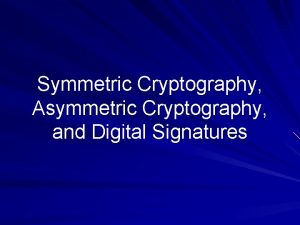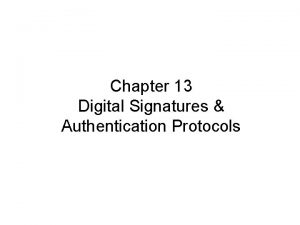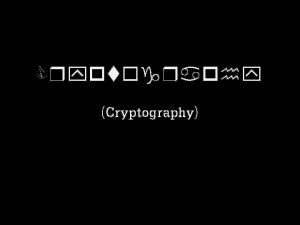Chapter 8 Digital Signatures Cryptography Techniques CNET326 Digital






- Slides: 6

Chapter -8 Digital Signatures Cryptography Techniques (CNET-326)

Digital Signatures Ø Ø Ø The most important development from the work on public-key cryptography is the digital signature. The digital signature provides a set of security capabilities that would be difficult to implement in any other way. Figure 13. 1 is a generic model of the process of making and using digital signatures. Bob can sign a message using a digital signature generation algorithm. The inputs to the algorithm are the message and Bob’s private key. Any other user, say Alice, can verify the signature using a verification algorithm, whose inputs are the message, the signature, and Bob’s public key.

Digital Signature Model

Digital Signature Model

Digital Signature Properties The digital signature must have the following Ø properties: Ø • It must verify the author and the date and time of the signature. Ø • It must authenticate the contents at the time of the signature. Ø • It must be verifiable by third parties, to resolve disputes. Ø

Digital Signatures Requirements Ø Ø Ø Ø On the basis of the properties and attacks just discussed, we can formulate the following requirements for a digital signature. • The signature must be a bit pattern that depends on the message being signed. • The signature must use some information unique to the sender to prevent both forgery and denial. • It must be relatively easy to produce the digital signature. • It must be relatively easy to recognize and verify the digital signature. • It must be computationally infeasible to forge a digital signature. • It must be practical to retain a copy of the digital signature in storage.
